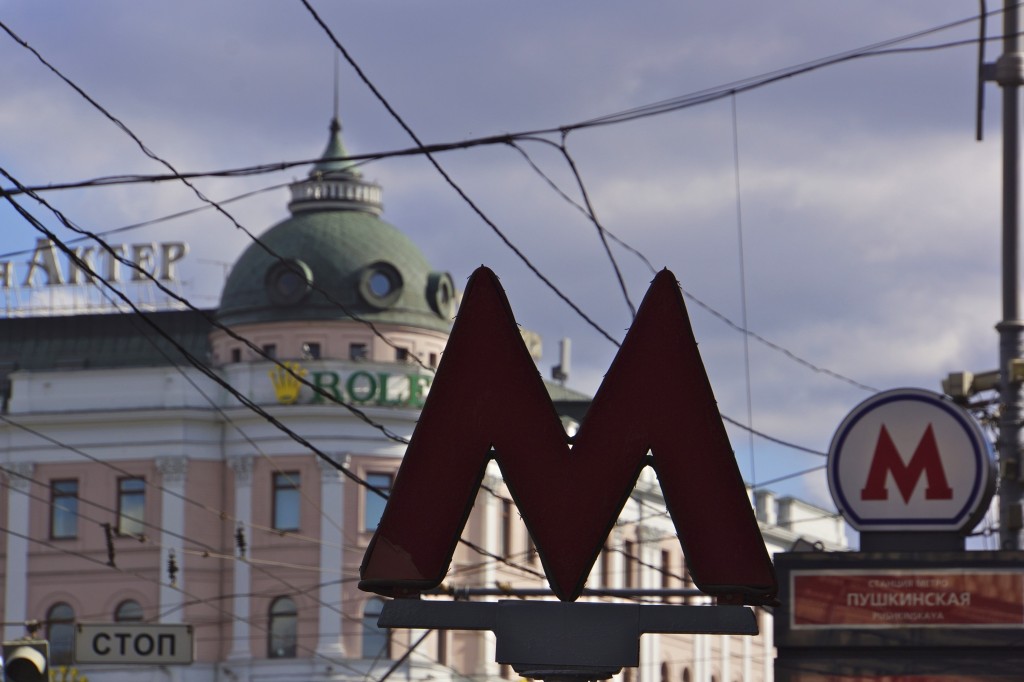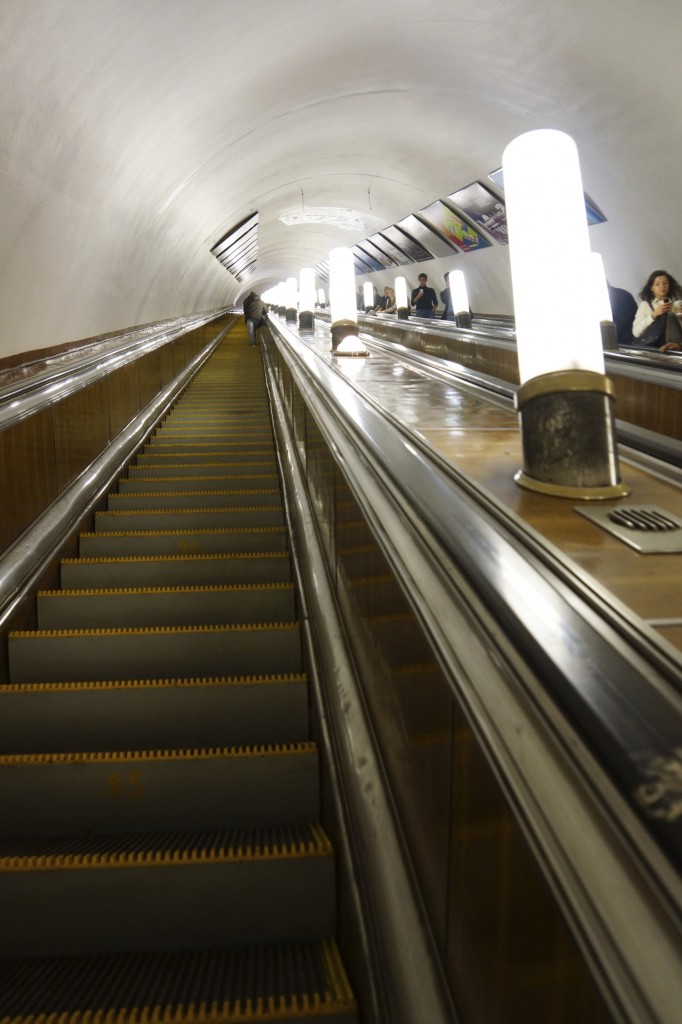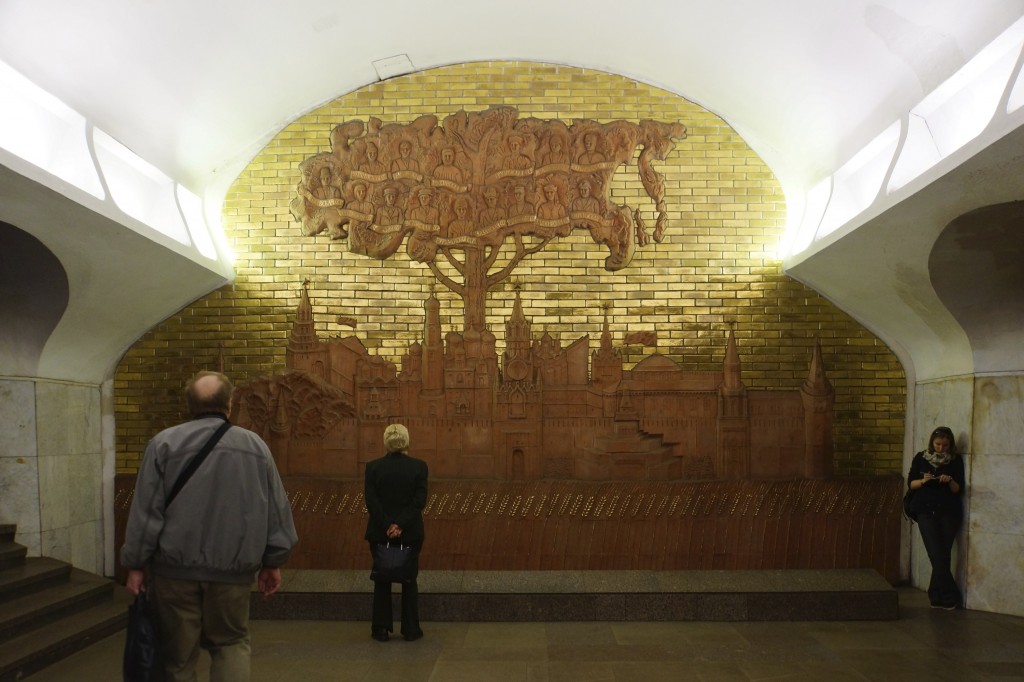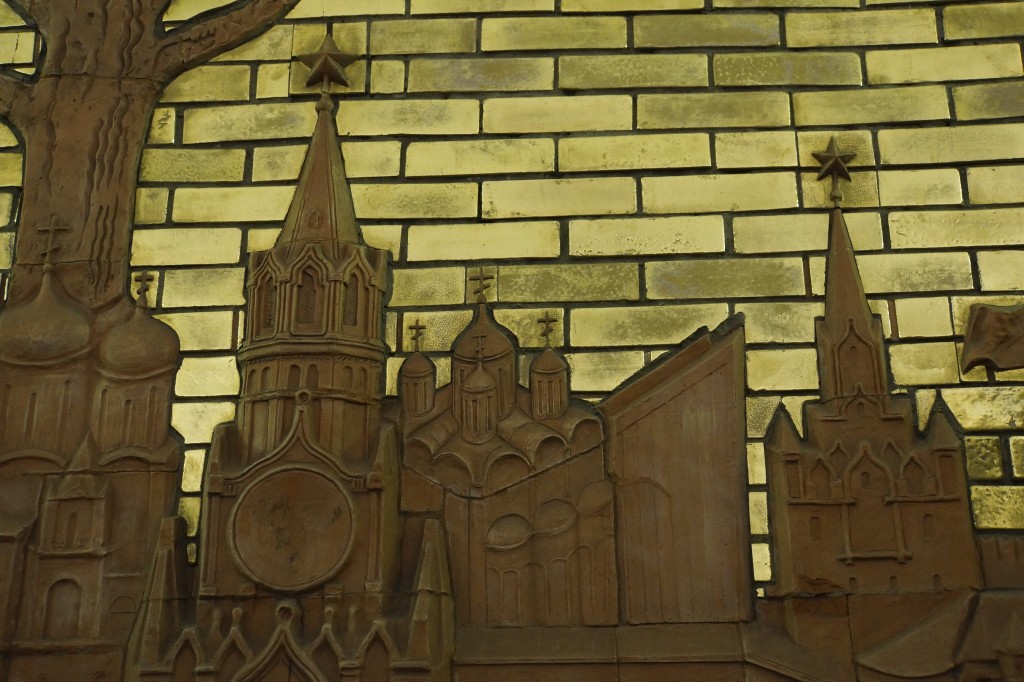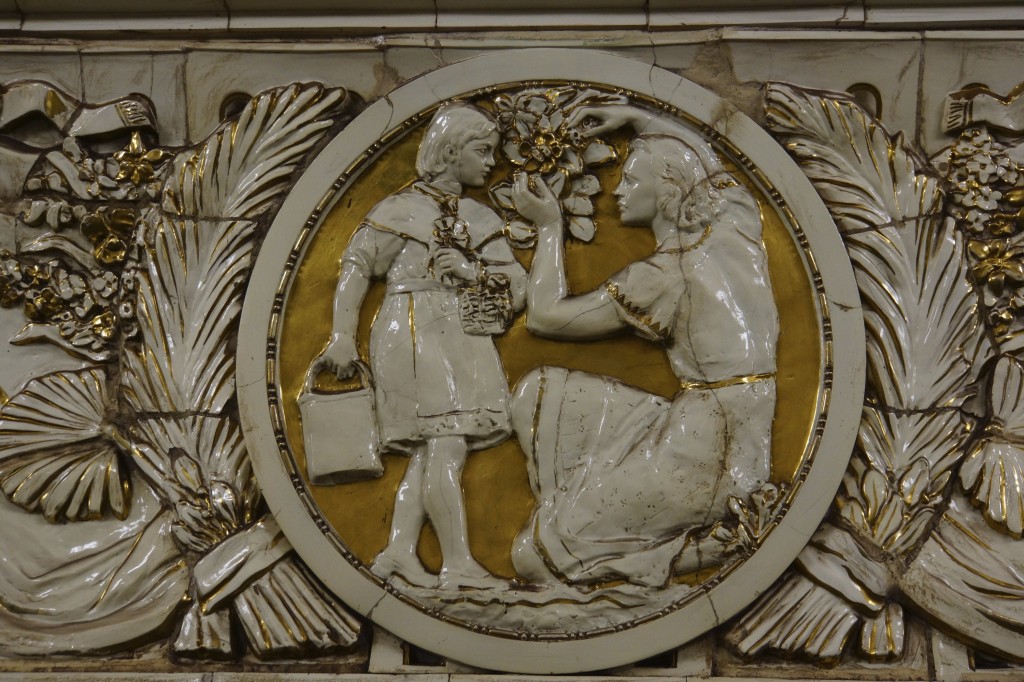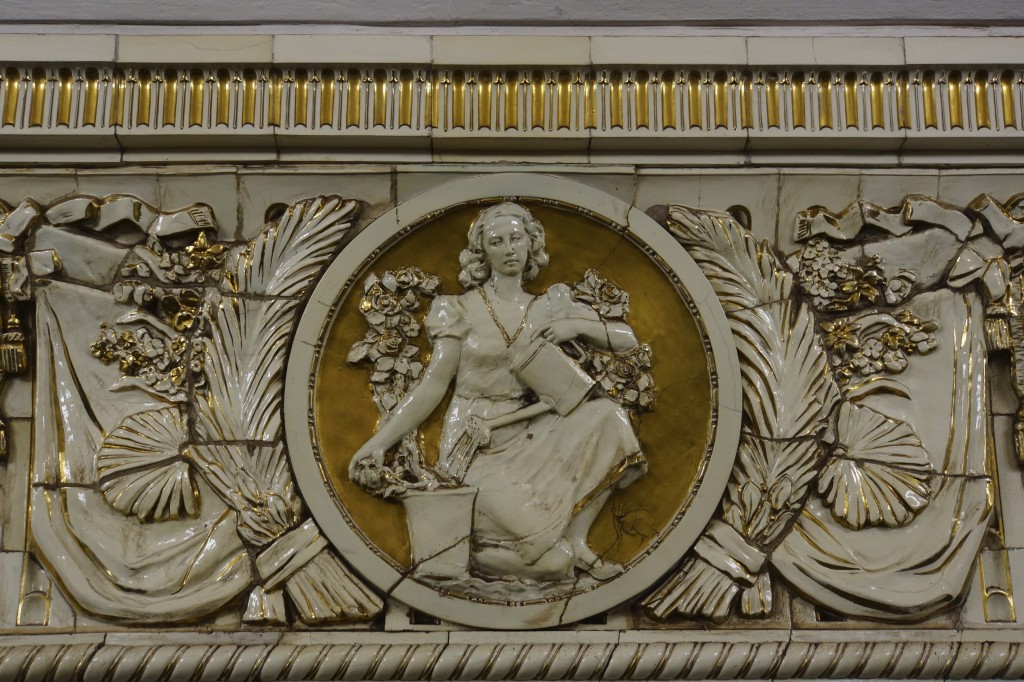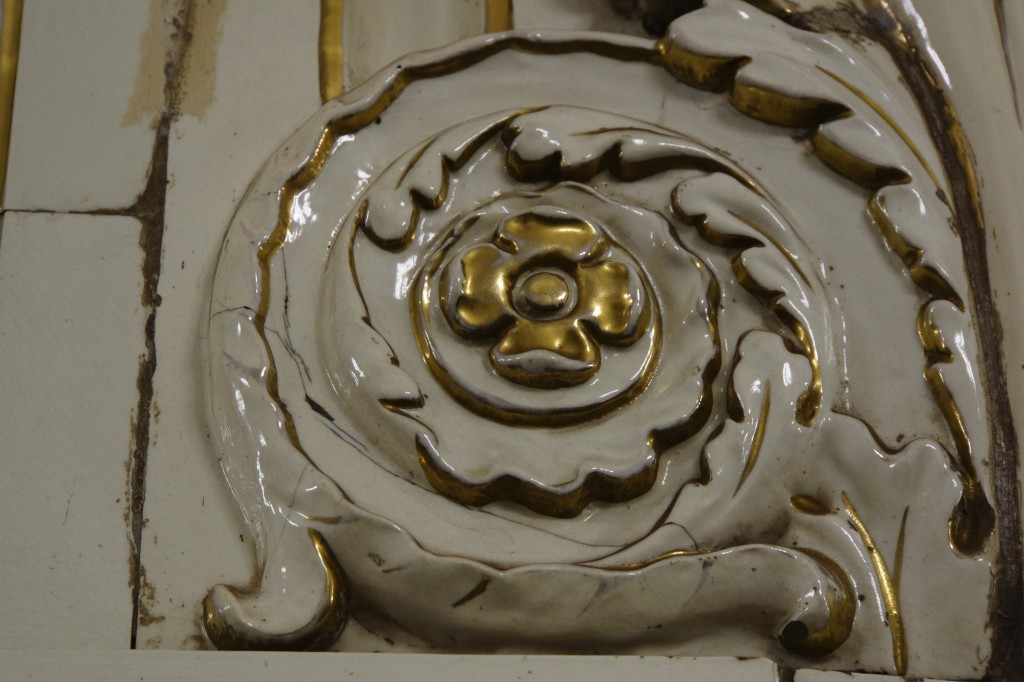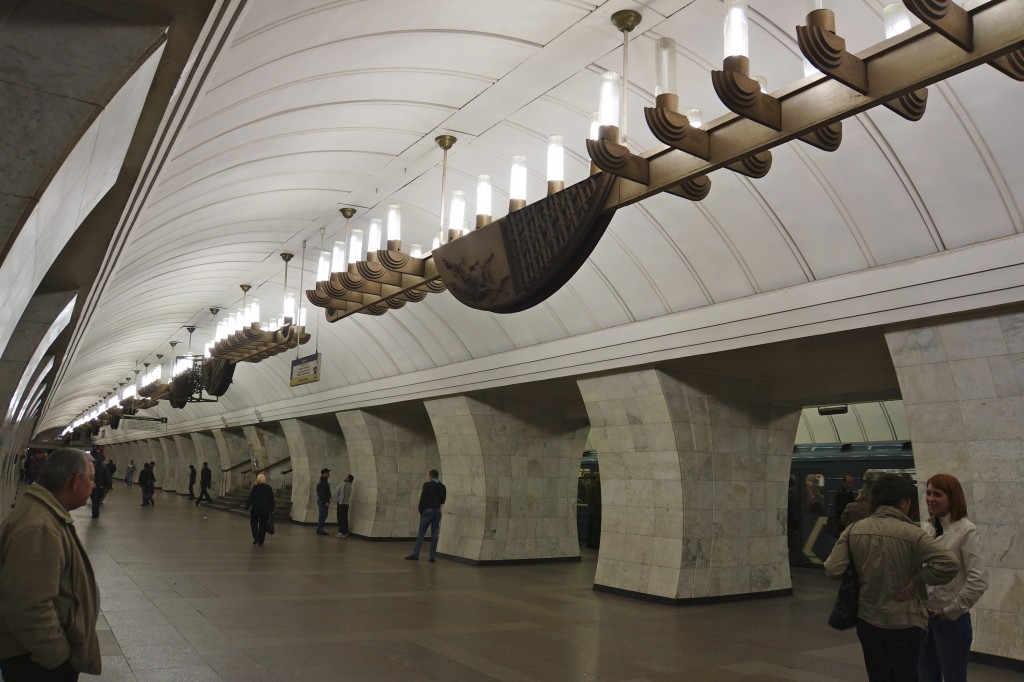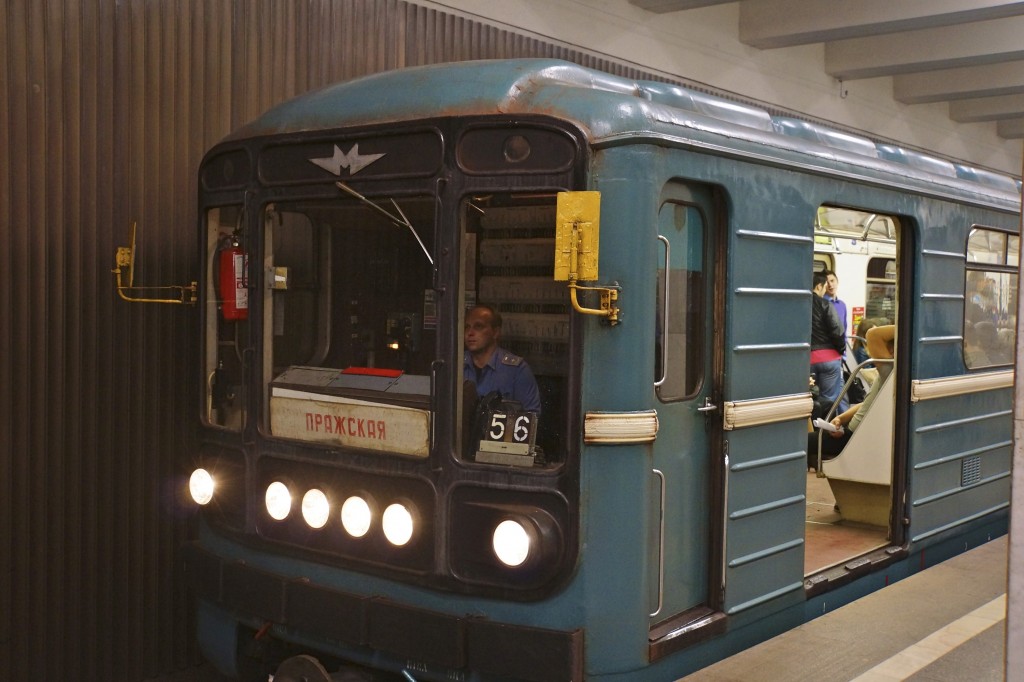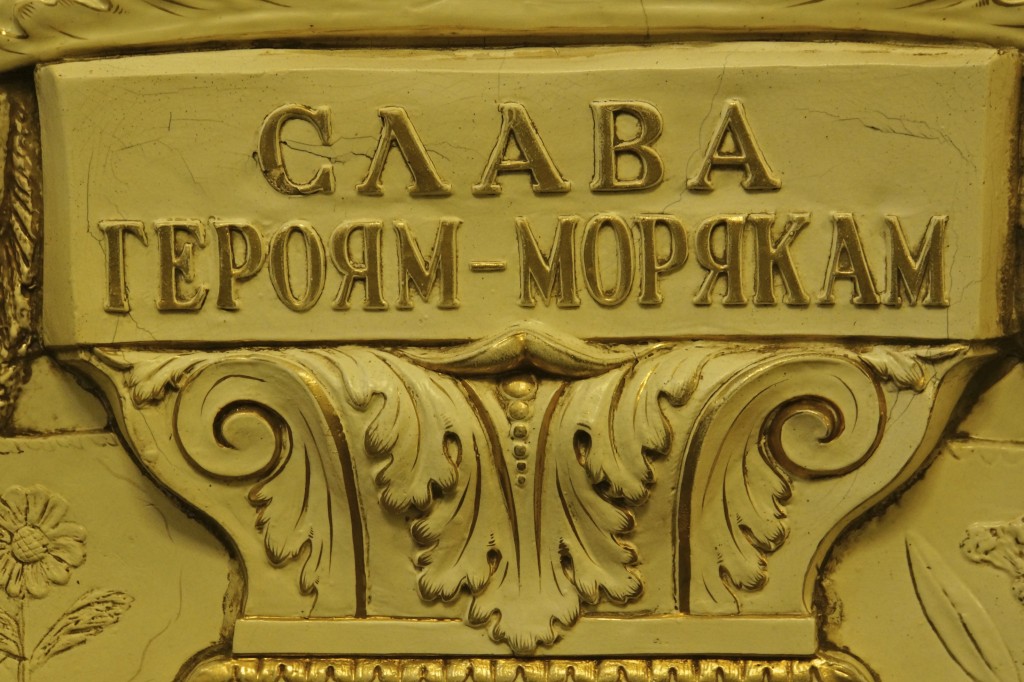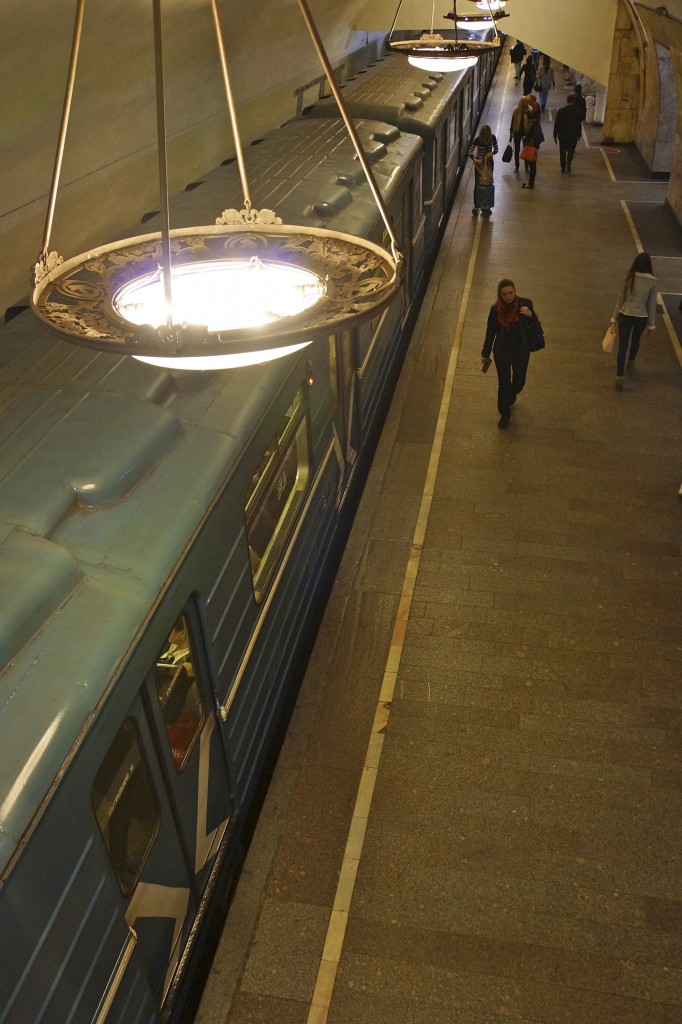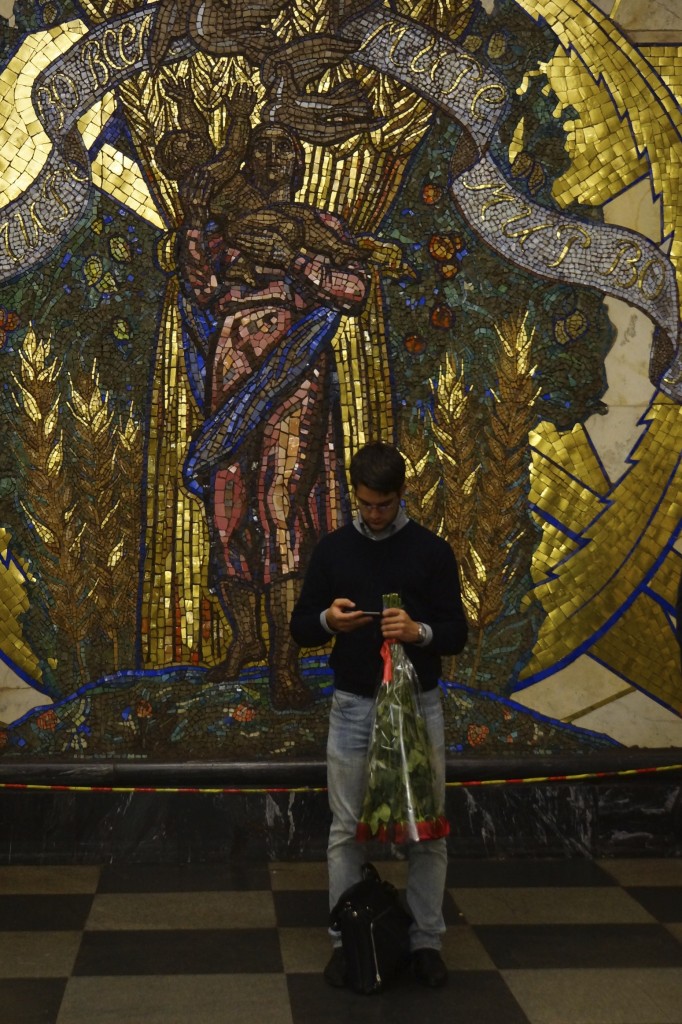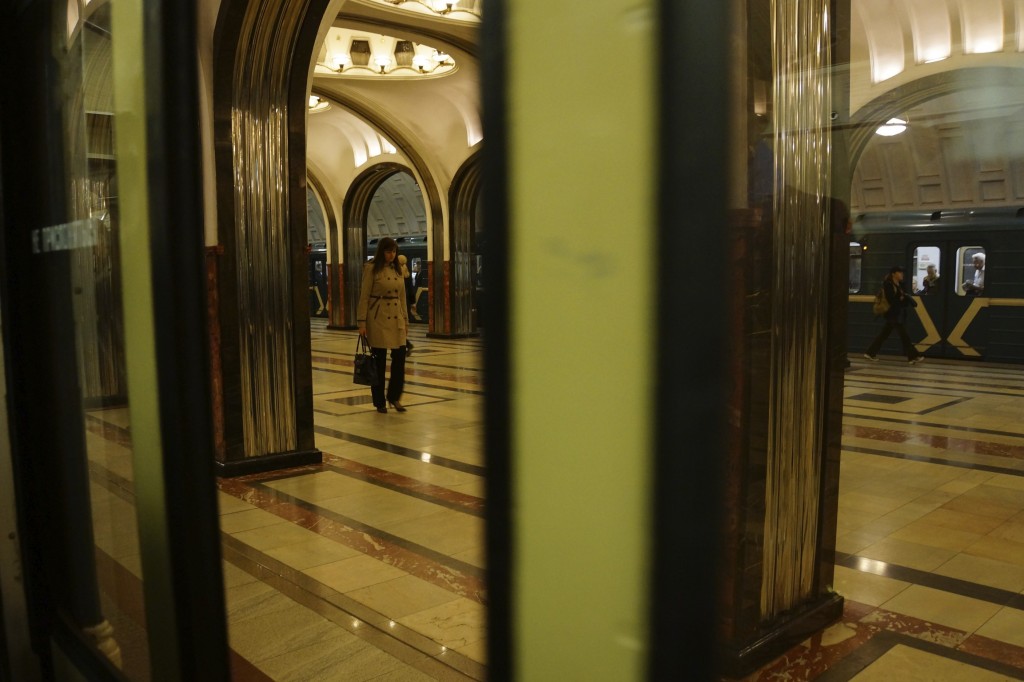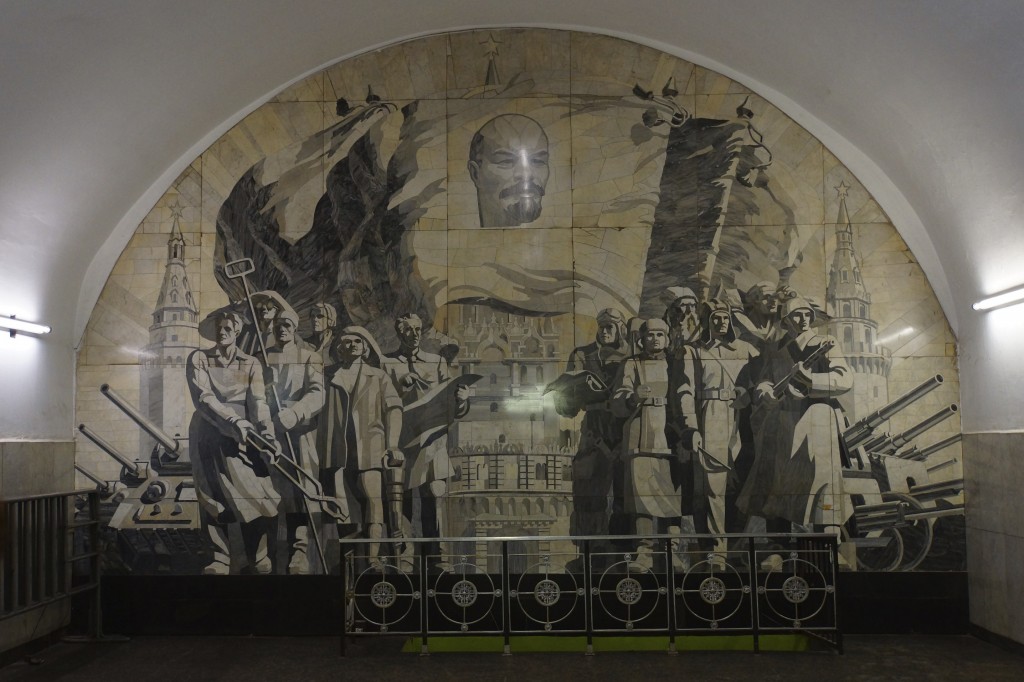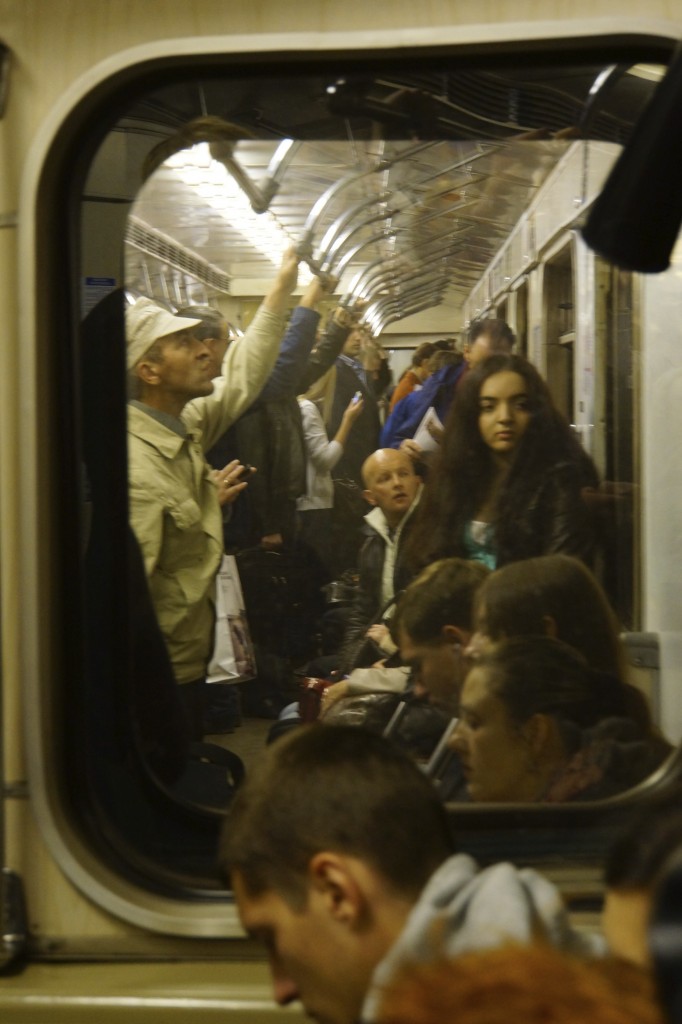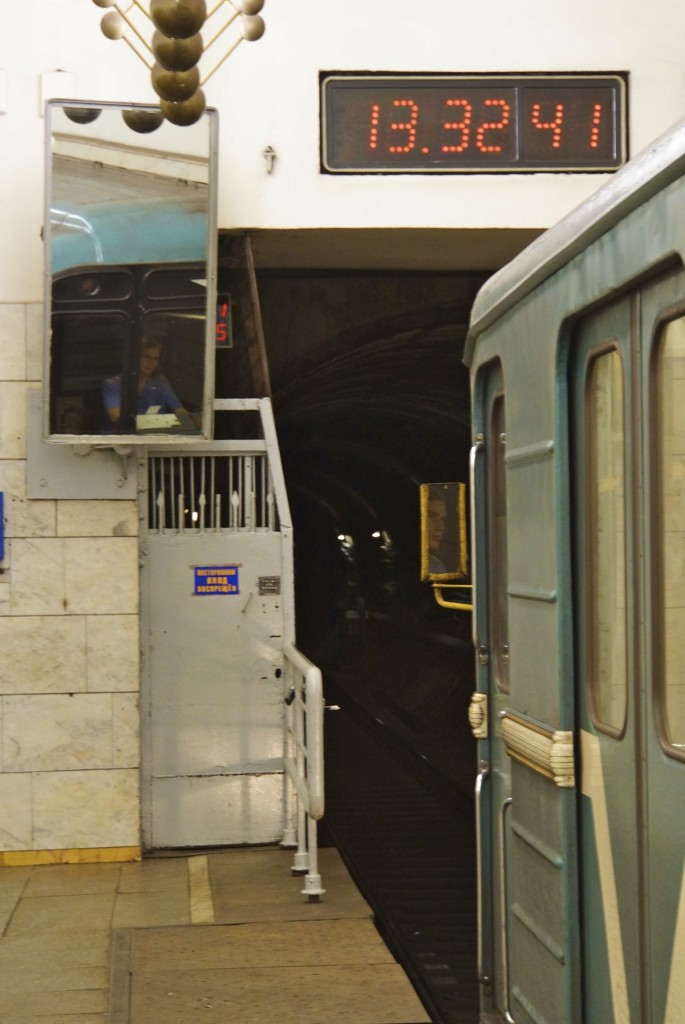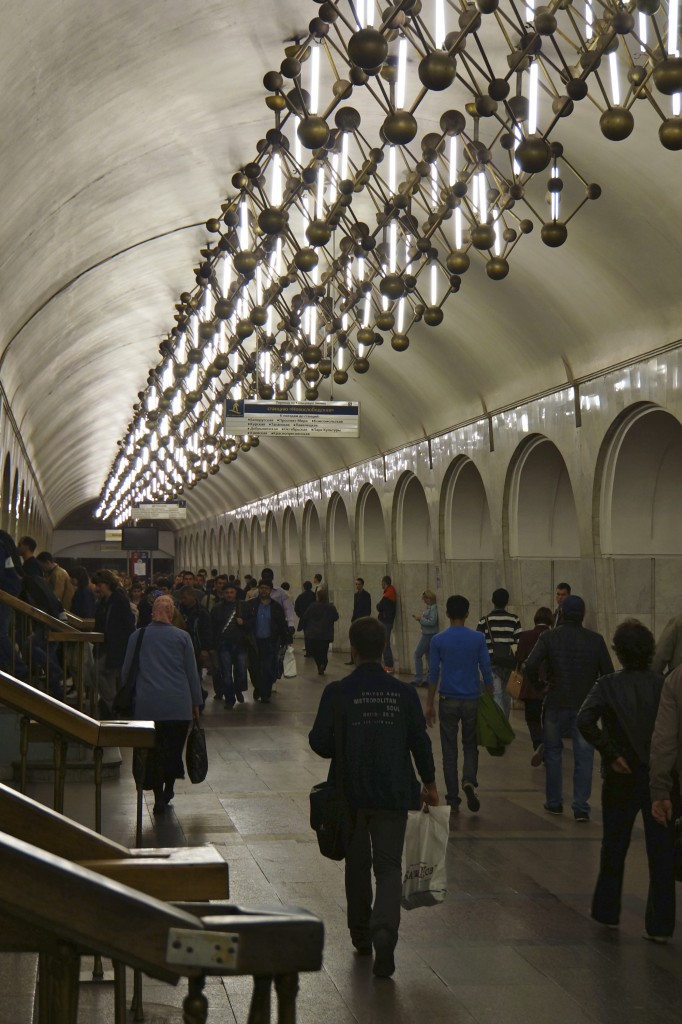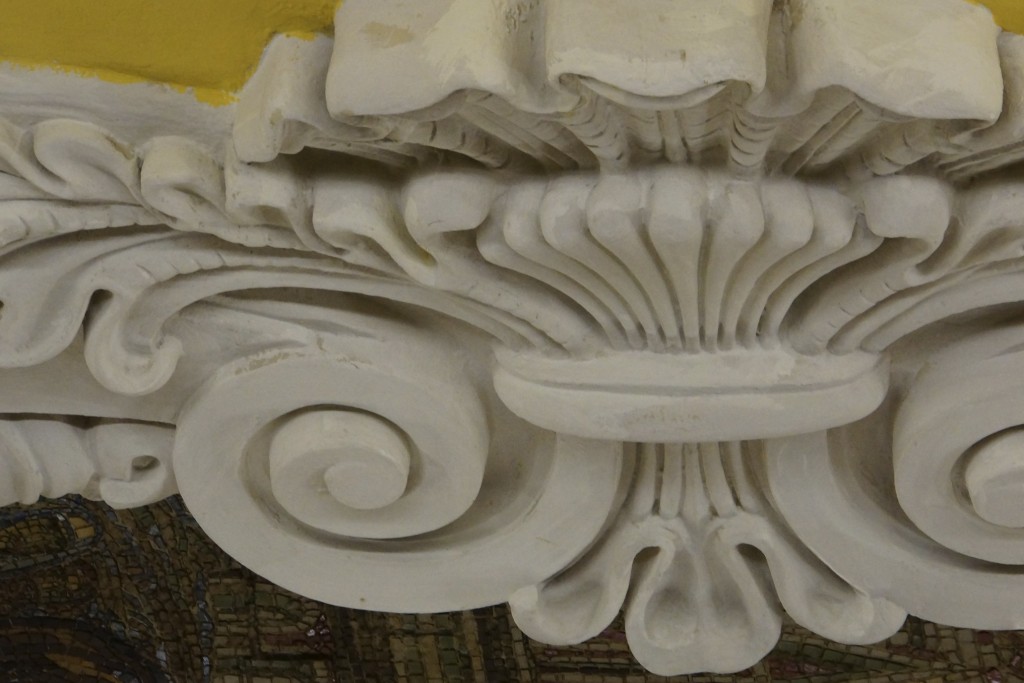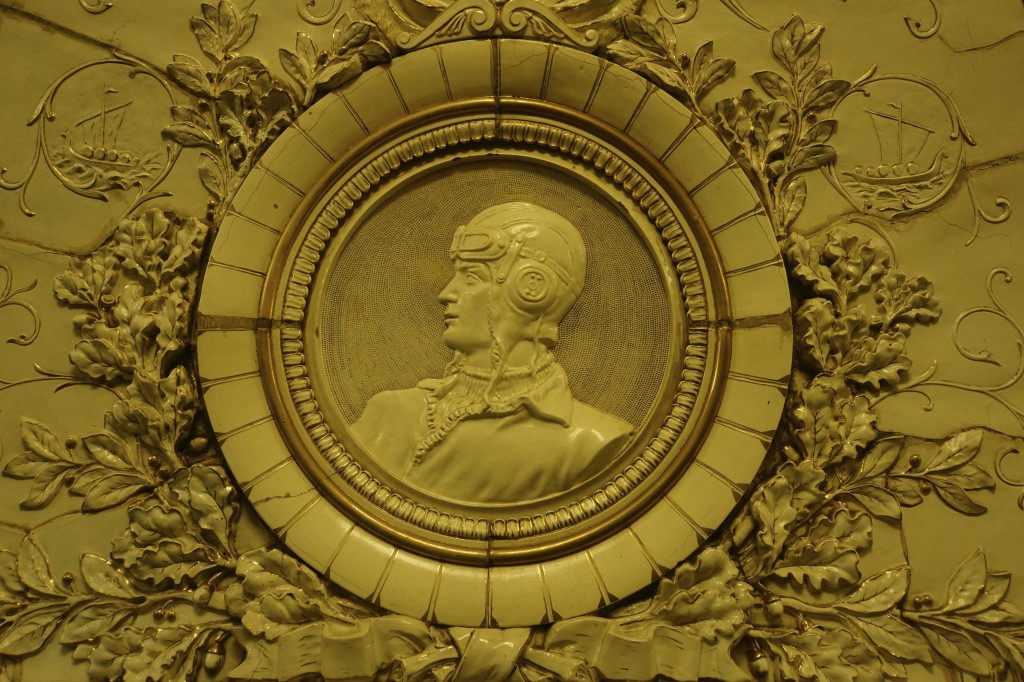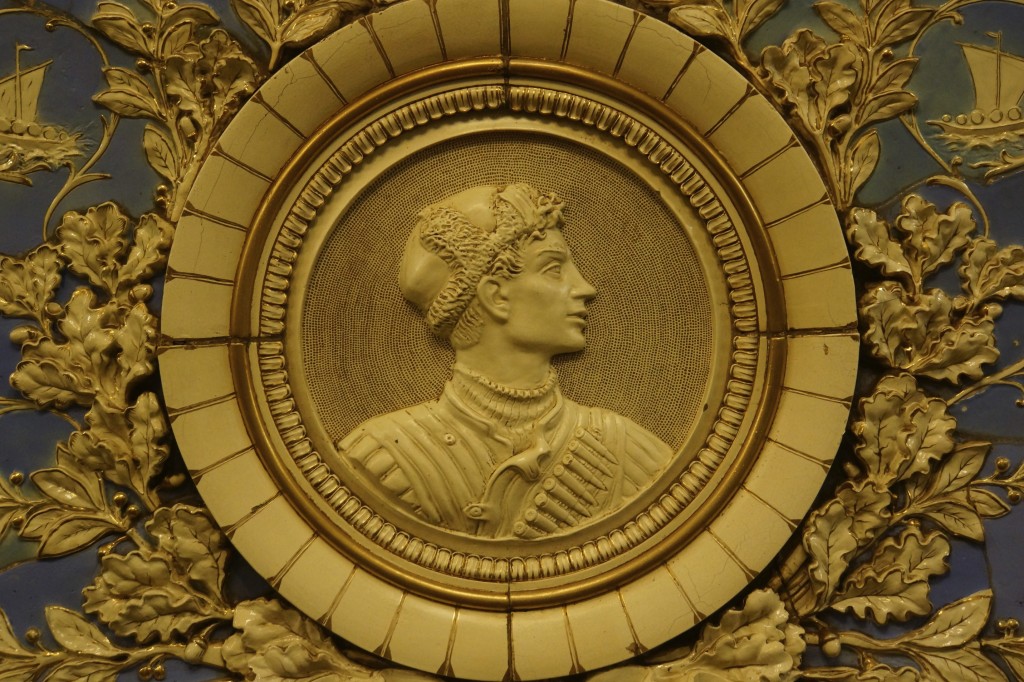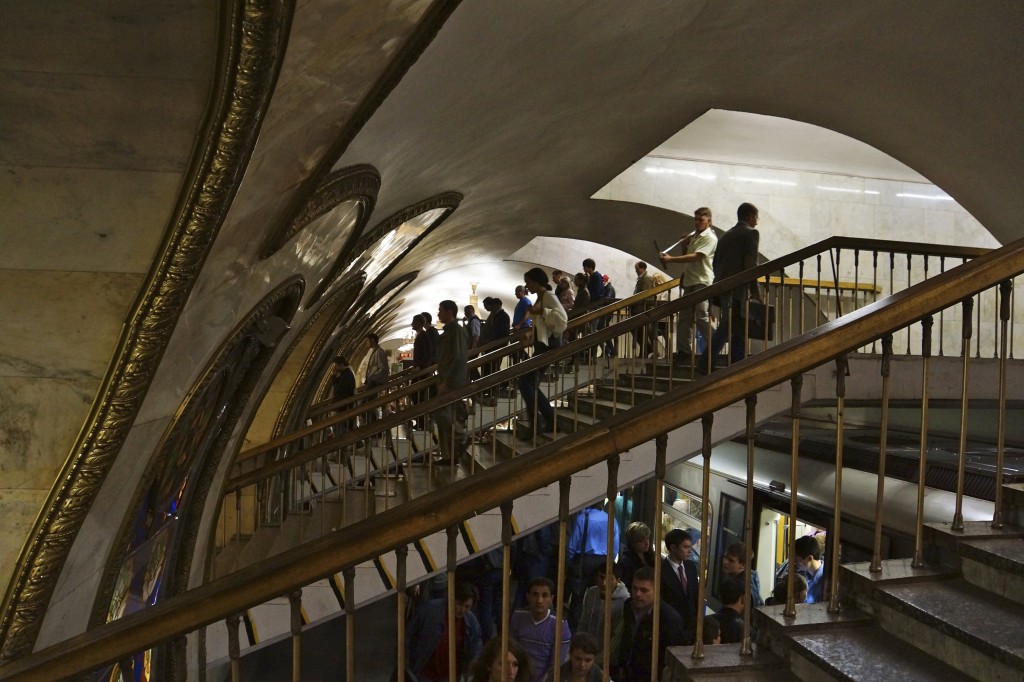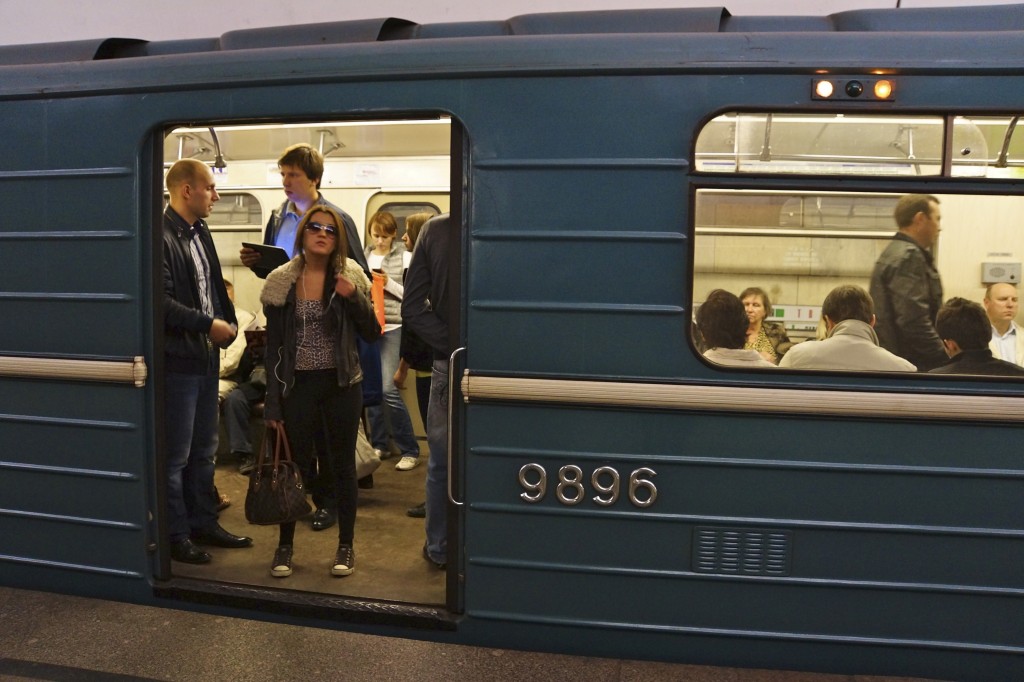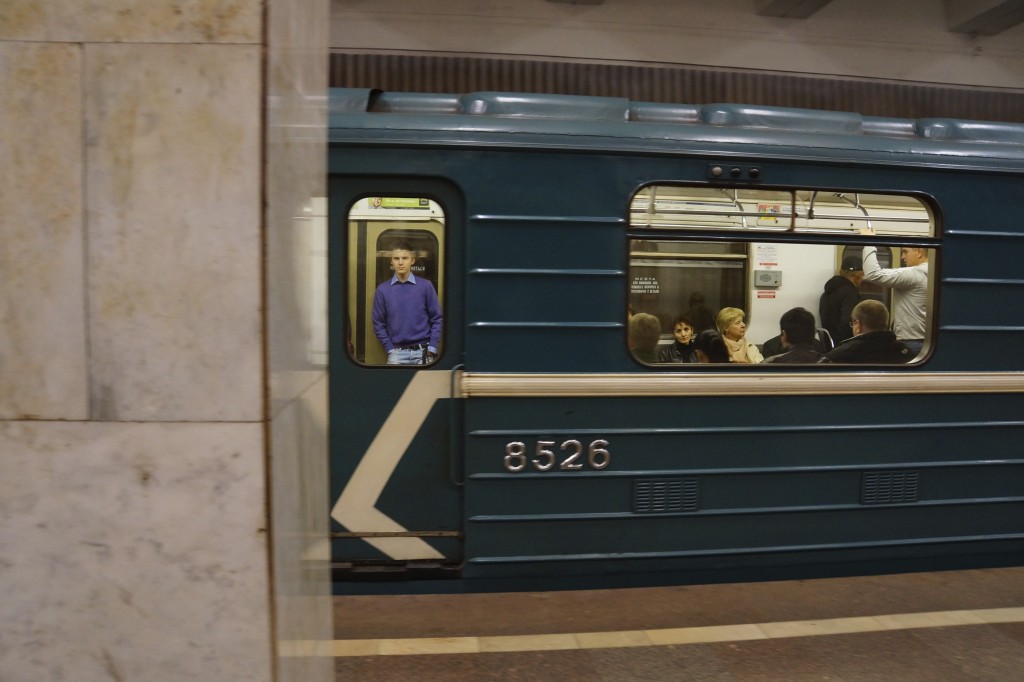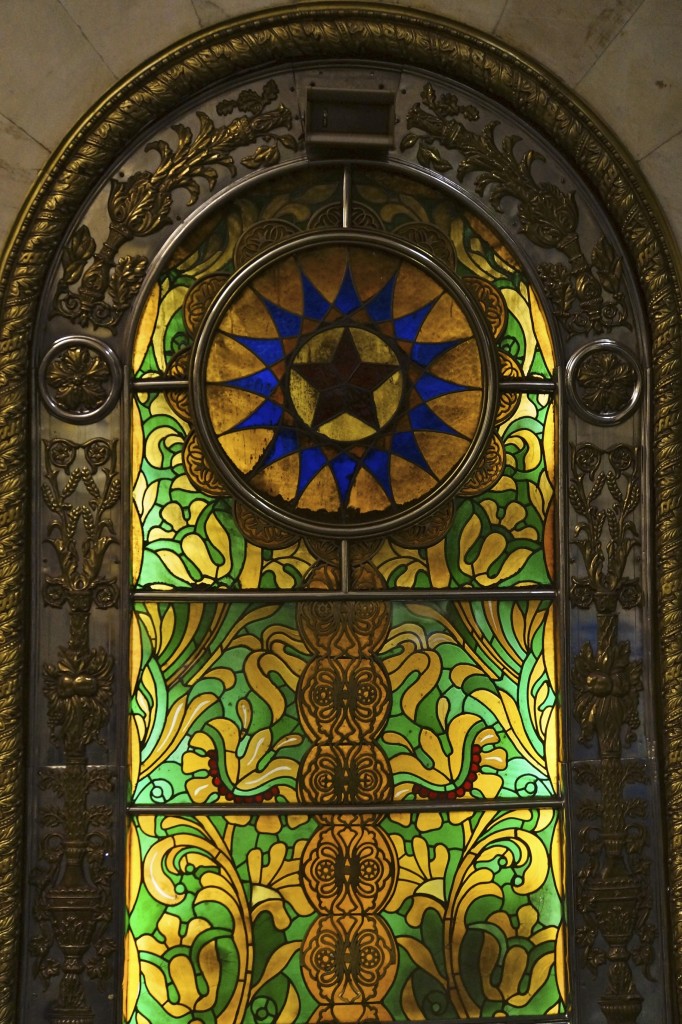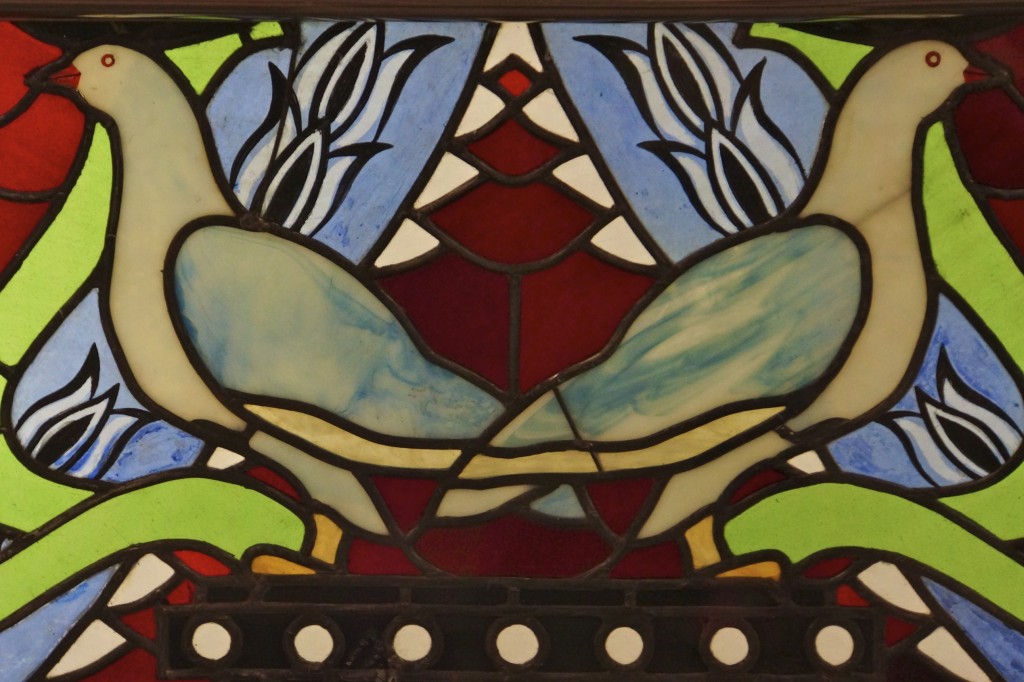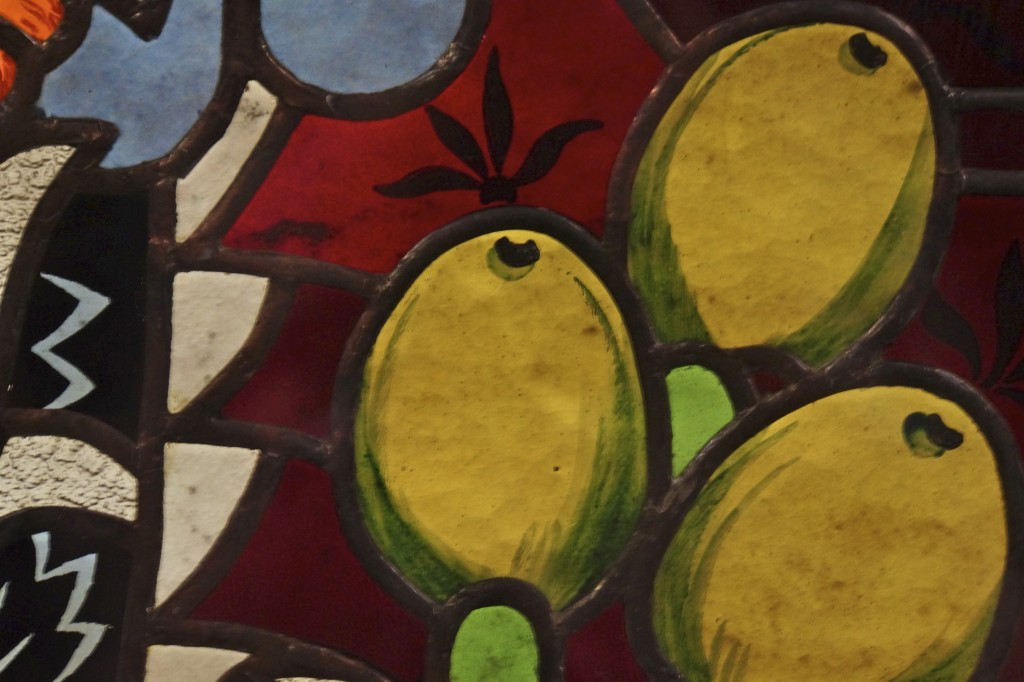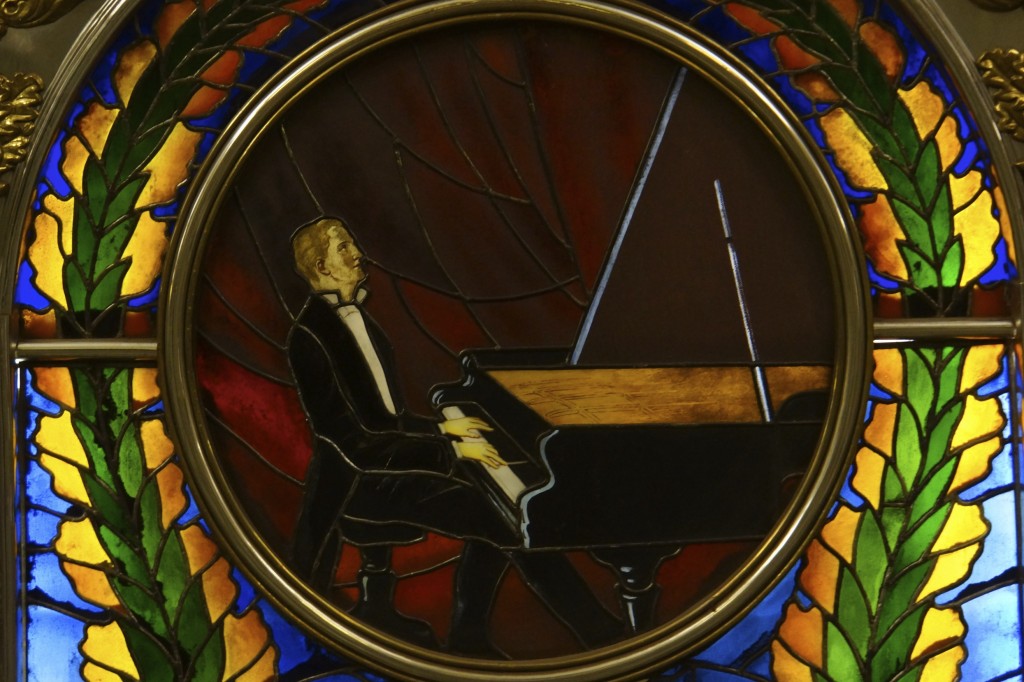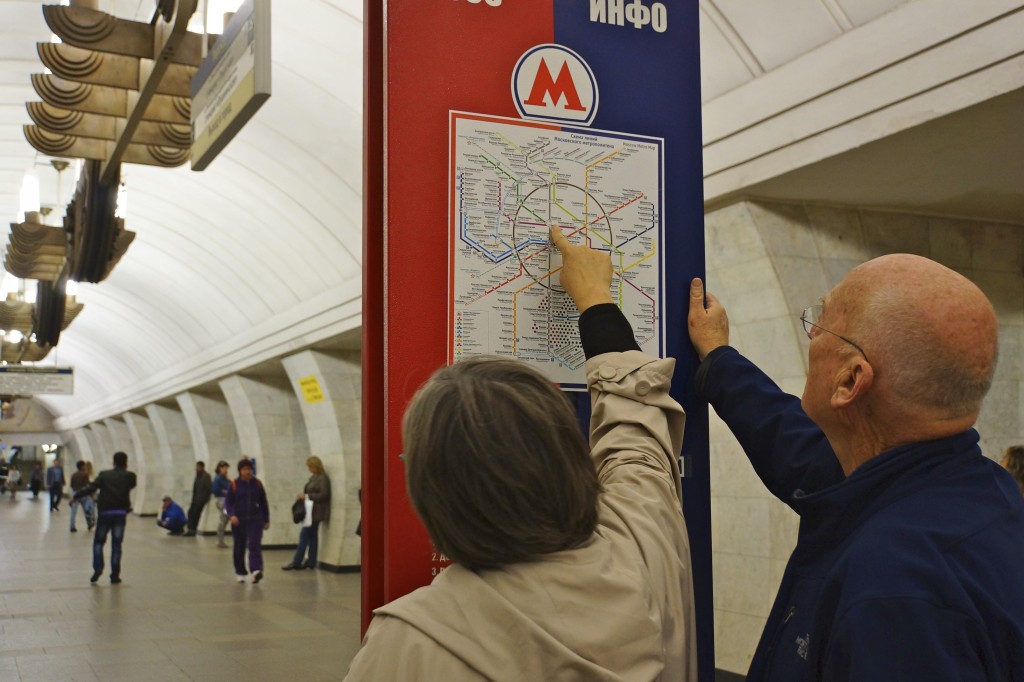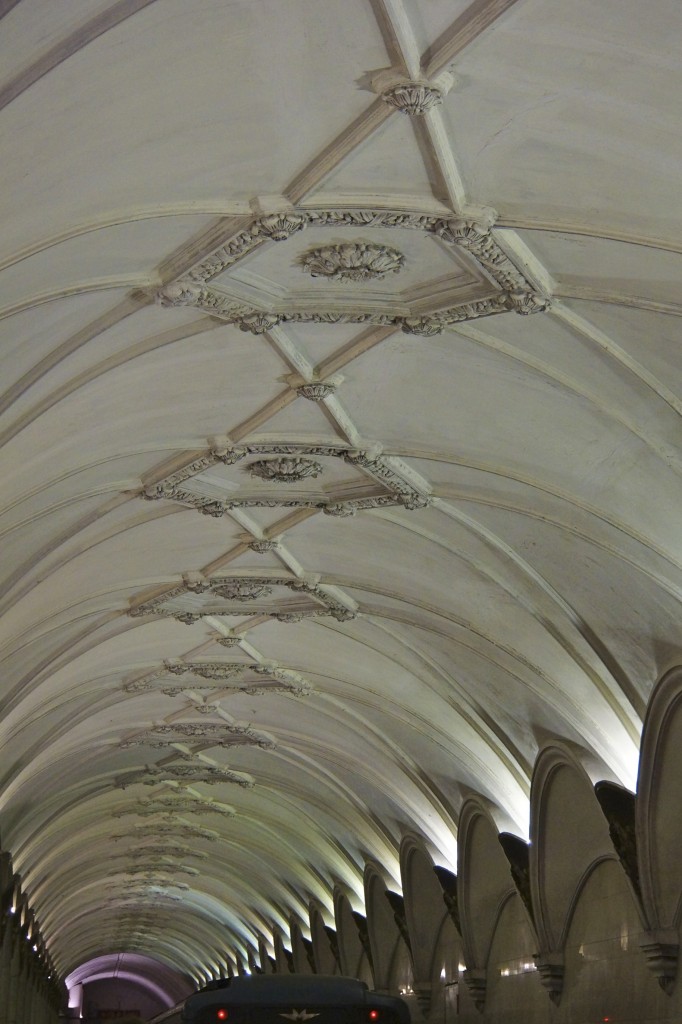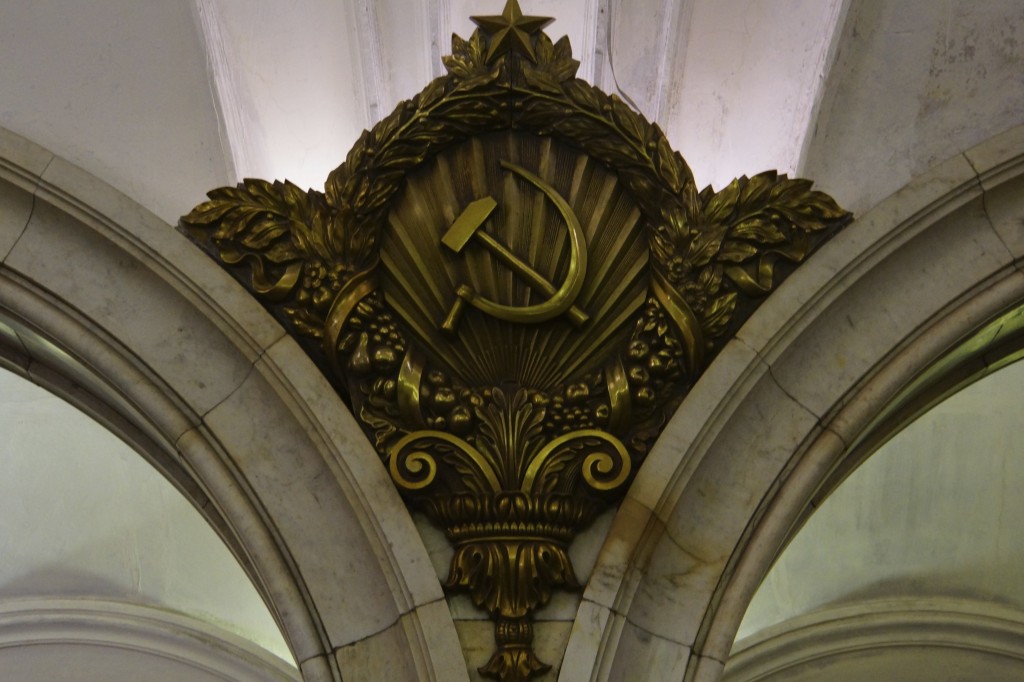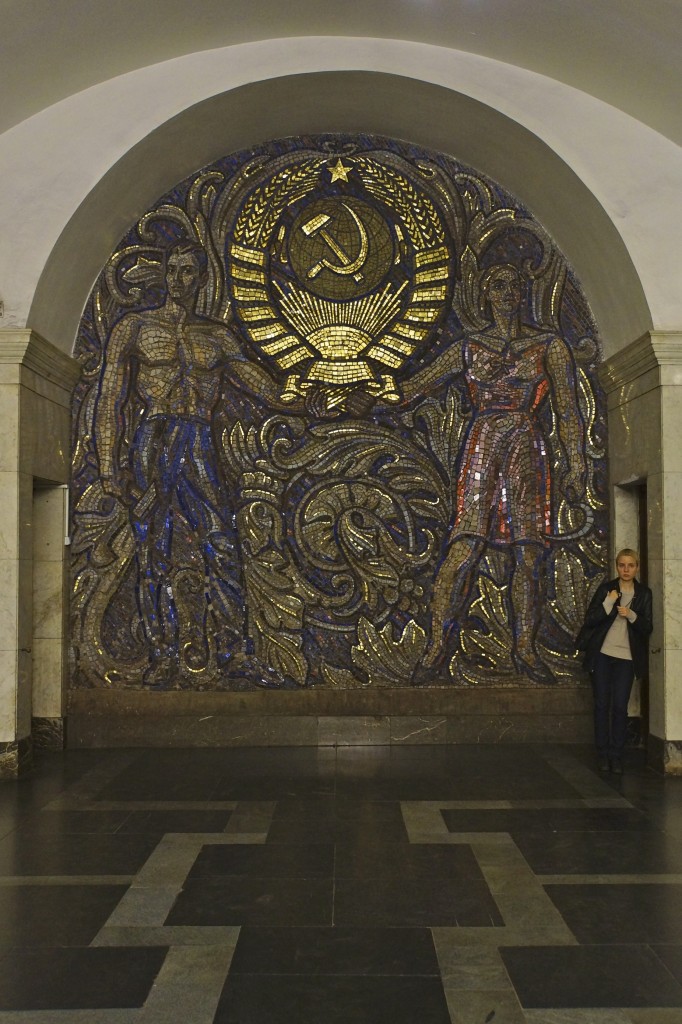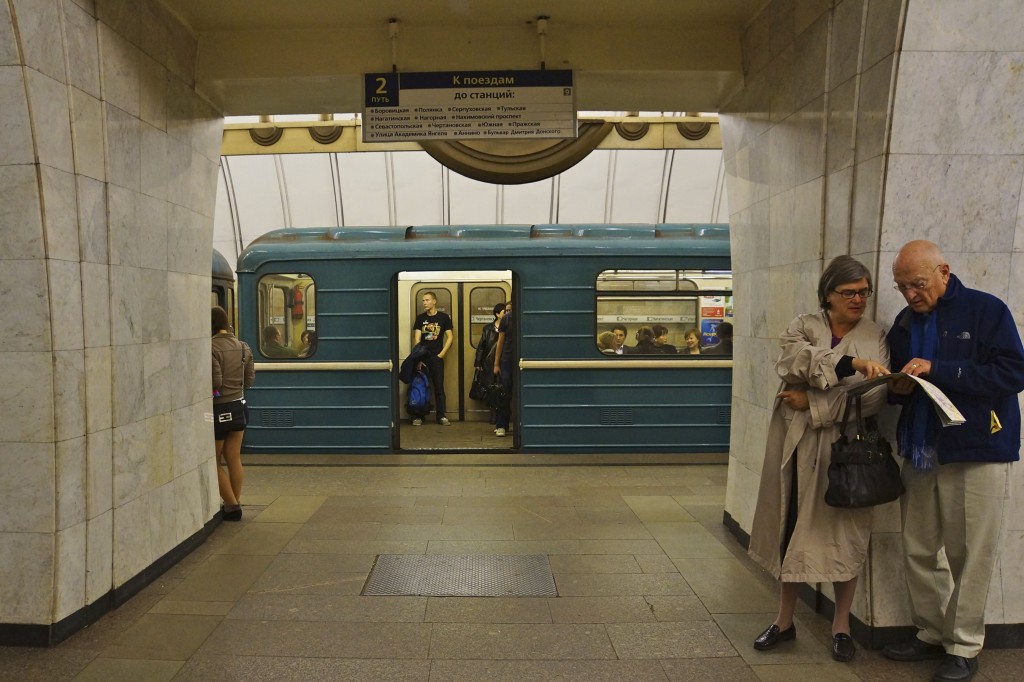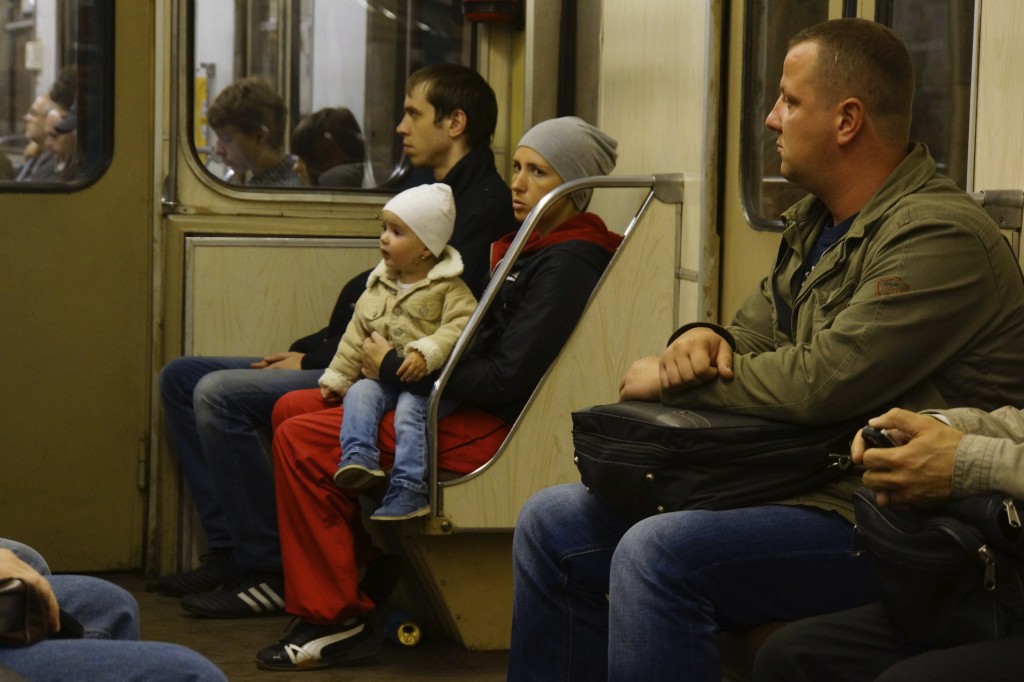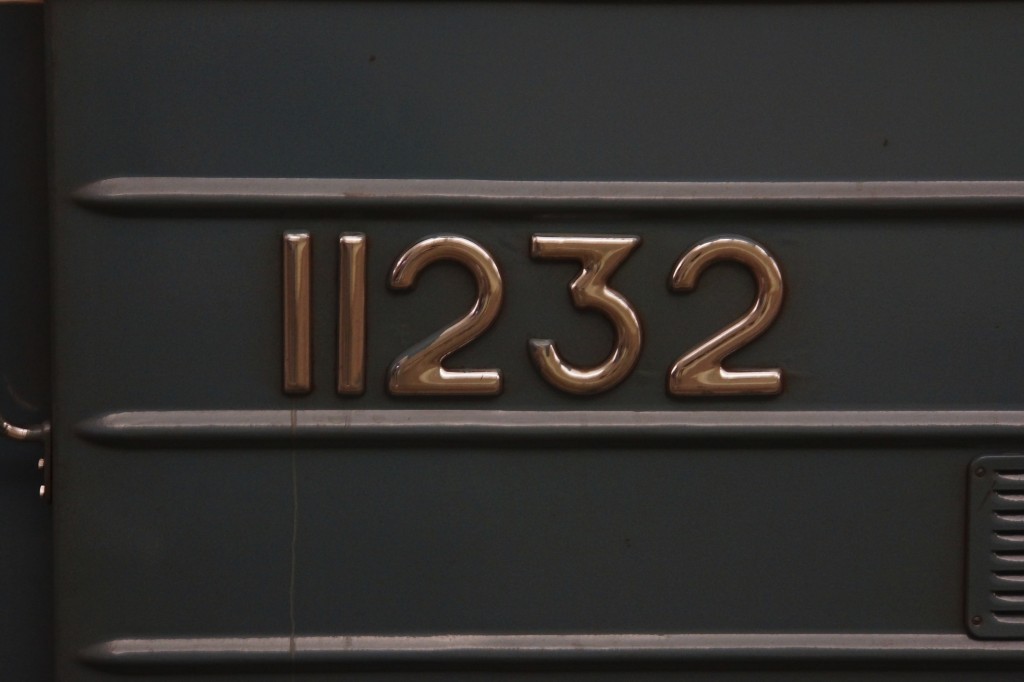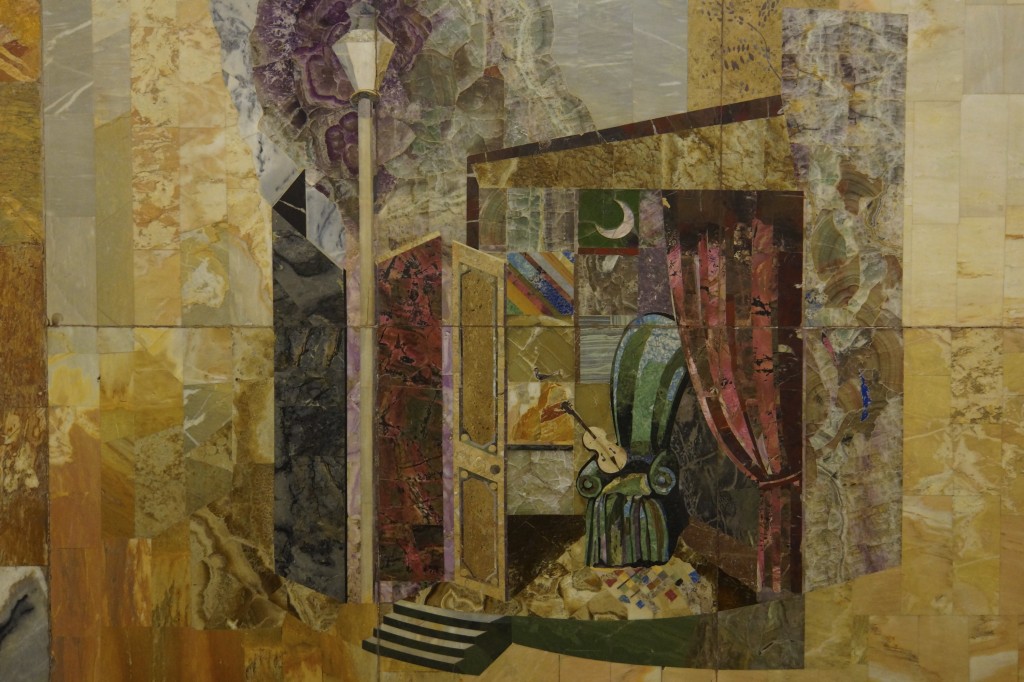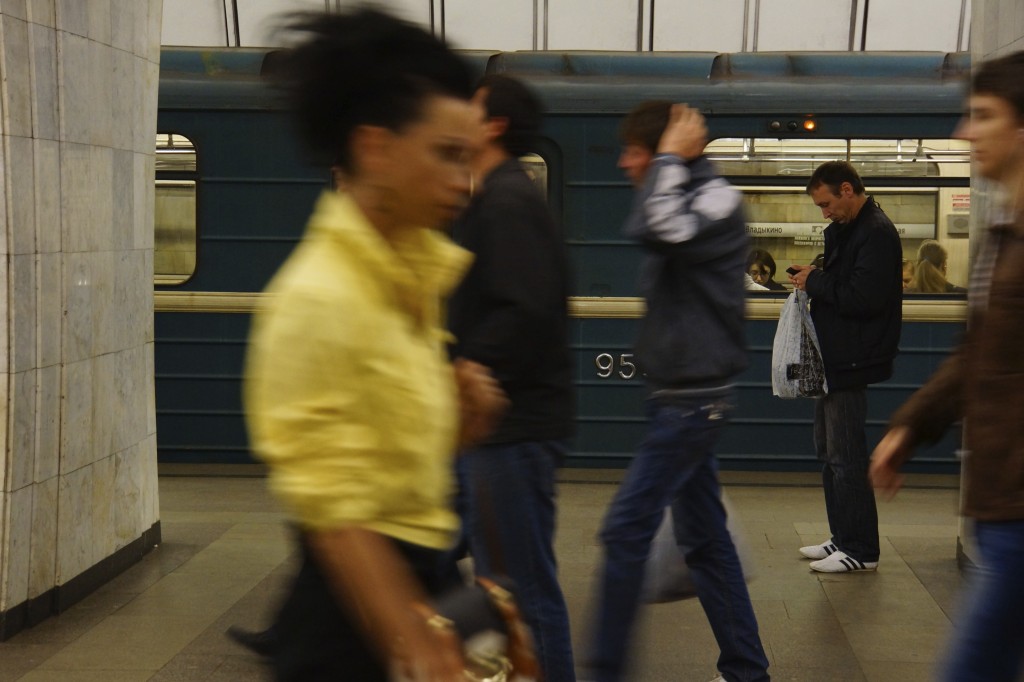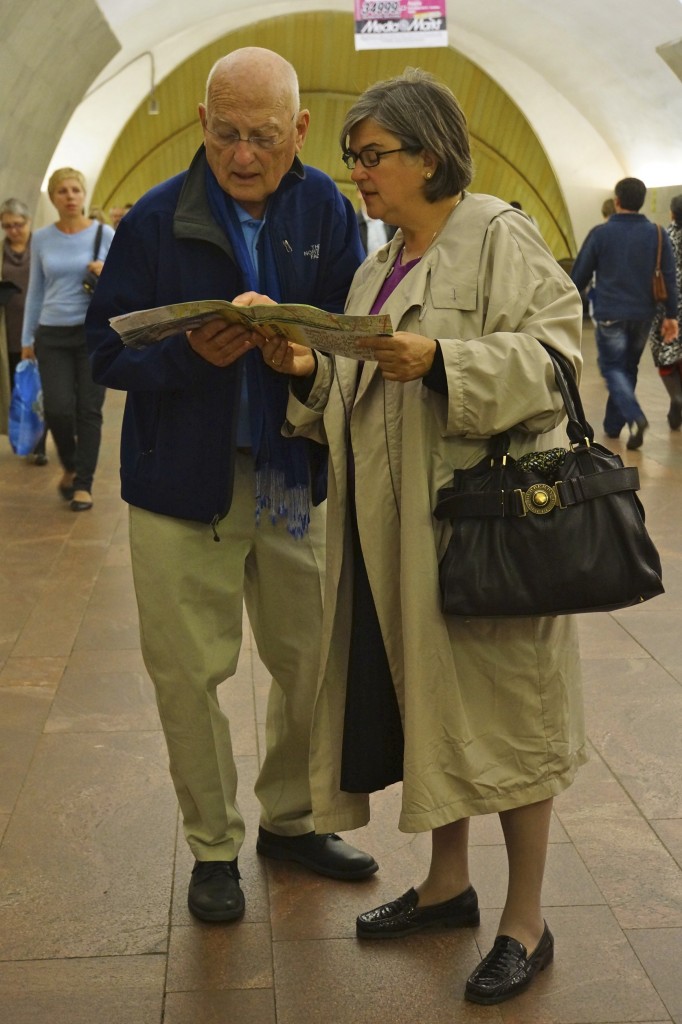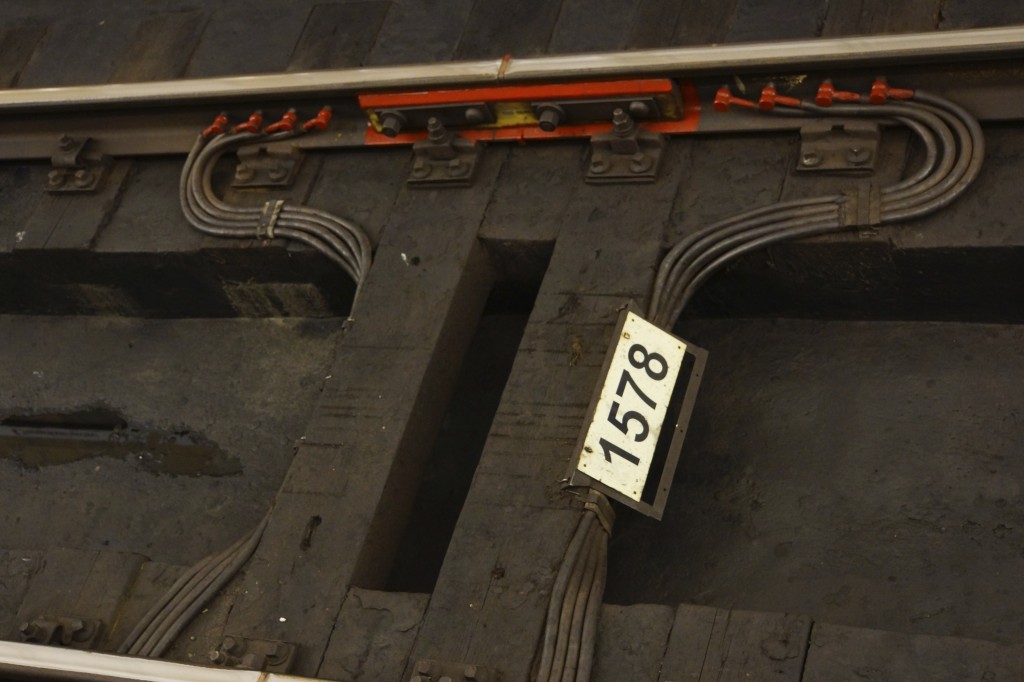The early metro lines were laid very deep underground to be used as bomb shelters during the war. In November 1941, when German troops were looming and the Soviet Union was fighting for survival, Stalin addressed his forces in the central station.
From Eyewitness Travel Moscow.
The Moscow Metro was one of the USSR’s most extravagant architectural projects. Stalin ordered the metro’s artists and architects to design a structure that embodied svet (radiance or brilliance) and svetloe budushchee (a radiant future).[11] With their reflective marble walls, high ceilings and grandiose chandeliers, many Moscow Metro stations have been likened to an “artificial underground sun”.[12] This underground communist paradise[12] reminded its riders that Stalin and his party had delivered something substantial to the people in return for their sacrifices. Most importantly, proletarian labor produced this svetloe budushchee.
The metro design’s emphasis on verticality was a reinforcement of Stalin’s deification[citation needed]. He directed his architects to design structures which would encourage citizens to look up, admiring the station’s art (as if they were looking up to admire the sun and—by extension—him as a god.[13] Another aspect of the apotheosis propaganda was the metro’s electrification; the Moscow Metro’s chandeliers are one of the most beautiful and technologically advanced aspects of the project.
The Moscow Metro is a state-owned enterprise.[2] Its total length is 308.7 km (191.8 mi) and consists of 12 lines and 186 stations. The average daily passenger traffic is 6.6 million. Ridership is highest on weekdays (when the Metro carries over 7 million passengers per day) and lower on weekends. Each line is identified according to an alphanumeric index (usually consisting of a number), a name and a colour. Voice announcements refer to the lines by name. A male voice announces the next station when traveling towards the centre of the city, and a female voice when going away from it. On the circle line the clockwise direction has a male announcer for the stations, while the counter-clockwise direction has a female announcer. The lines are also assigned specific colours for maps and signs. Naming by colour is frequent in colloquial usage, except for the very similar shades of green assigned to the Kakhovskaya Line (route 11), the Zamoskvoretskaya Line (route 2), the Lyublinsko-Dmitrovskaya Line (route 10) and the Butovskaya Line (route L1).
The system operates in an enhanced spoke-hub distribution paradigm, with the majority of rail lines running radially from the centre of Moscow to the outlying areas. The Koltsevaya Line (route 5) forms a 20-kilometre (12 mi)long ring which enables passenger travel between these spokes. Signs showing the stations that can be reached in a given direction are in each station.[3] A complete map is also on each station both inside and outside, and in the trains, but not on the platforms. Most of the stations and lines are underground, but some lines have at-grade and elevated sections. TheFilyovskaya Line is notable for being the only line with most of its route at grade.
From:http://en.wikipedia.org/wiki/Moscow_Metro

